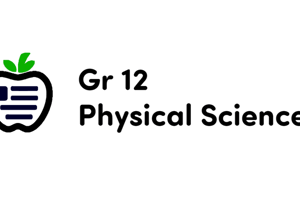Podcast
Questions and Answers
Which of the following elements make up 99% by weight of typical living systems?
Which of the following elements make up 99% by weight of typical living systems?
- C, H, O, N, Ar, Na
- C, H, N, O, P, S (correct)
- C, H, O, N, Cl, Ca
- C, H, O, N, Ca, Mg
What unique property of carbon allows it to form complex molecules?
What unique property of carbon allows it to form complex molecules?
- It can form single, double, and triple bonds. (correct)
- It can form bonds with a maximum of three other elements.
- It can only form tetrahedral arrangements.
- It is the only element that can form rings.
Which molecular arrangement is characteristic of carbon forming single bonds?
Which molecular arrangement is characteristic of carbon forming single bonds?
- Planar
- Tetrahedral (correct)
- Linear
- Cylindrical
Which type of bond restricts rotation between atoms in a molecule?
Which type of bond restricts rotation between atoms in a molecule?
Which statement is true regarding the carbon skeletons of organic molecules?
Which statement is true regarding the carbon skeletons of organic molecules?
What is a defining characteristic of carbon's bonding in organic compounds?
What is a defining characteristic of carbon's bonding in organic compounds?
In terms of biomolecules, which is true about triple bonds?
In terms of biomolecules, which is true about triple bonds?
Which of the following statements correctly describes functional groups in organic chemistry?
Which of the following statements correctly describes functional groups in organic chemistry?
Which functional group is characterized by a carbon atom double-bonded to an oxygen atom and also bonded to a hydroxyl group?
Which functional group is characterized by a carbon atom double-bonded to an oxygen atom and also bonded to a hydroxyl group?
What defines a molecule, according to the provided content?
What defines a molecule, according to the provided content?
Which functional group is primarily involved in forming disulfide bonds between organic molecules?
Which functional group is primarily involved in forming disulfide bonds between organic molecules?
Which functional group contains nitrogen and is involved in the formation of amino acids?
Which functional group contains nitrogen and is involved in the formation of amino acids?
What is indicated by the energy required for bond dissociation?
What is indicated by the energy required for bond dissociation?
Which of the following best describes chiral molecules?
Which of the following best describes chiral molecules?
What are enantiomers?
What are enantiomers?
What characterizes geometric isomers such as cis and trans isomers?
What characterizes geometric isomers such as cis and trans isomers?
Which of the following statements about diastereomers is true?
Which of the following statements about diastereomers is true?
What is the significance of chirality in biological systems?
What is the significance of chirality in biological systems?
Which of the following is a feature of Fischer projection formulas?
Which of the following is a feature of Fischer projection formulas?
What does valence indicate in organic molecules?
What does valence indicate in organic molecules?
Which of the following correctly describes stereoisomers?
Which of the following correctly describes stereoisomers?
Flashcards are hidden until you start studying
Study Notes
Organic Chemistry Basics
- Organic molecules are carbon-based chains with attached atoms or groups called "functional groups".
- Carbon is tetravalent, meaning it can form up to four covalent bonds, making complex molecules possible.
- There are six main elements found in living things: carbon, hydrogen, nitrogen, oxygen, phosphorus, and sulfur.
- Carbon can form single, double, and triple bonds, creating different shapes and structures.
- Functional groups are specific arrangements of atoms that give organic molecules their unique properties.
- Some examples of important functional groups include hydroxyl, carbonyl, carboxyl, amino, phosphate, and sulfhydryl.
- Important Note: Functional groups can affect a molecule's size, polarity, and reactivity.
- In biochemistry, the names of functional groups are important for communication and understanding.
- A molecule is defined as two or more atoms covalently bonded in specific proportions and with a unique geometry.
- The concept of "valence" indicates the number of covalent bonds an atom tends to form.
- Isomers are molecules with the same molecular formula but different arrangements of atoms.
- Stereoisomers are isomers with the same connectivity of atoms but differ in their spatial arrangement.
- Enantiomers are stereoisomers that are non-superimposable mirror images of each other.
- Diastereomers are stereoisomers that are not mirror images of each other.
- A chiral molecule is not superimposable on its mirror image and can exist as a pair of enantiomers.
- An achiral molecule is superimposable on its mirror image.
- The biological importance of chirality lies in the specific binding of chiral molecules to chiral receptor sites.
- Fisher projection formulas are a 2D representation of chiral molecules, with vertical lines representing bonds behind the plane of the paper and horizontal lines representing bonds out of the plane of the paper.
Bonding & Strength
- Bond strength is determined by the amount of energy required to break the bond.
- The greater the required energy, the stronger the bond.
Studying That Suits You
Use AI to generate personalized quizzes and flashcards to suit your learning preferences.




